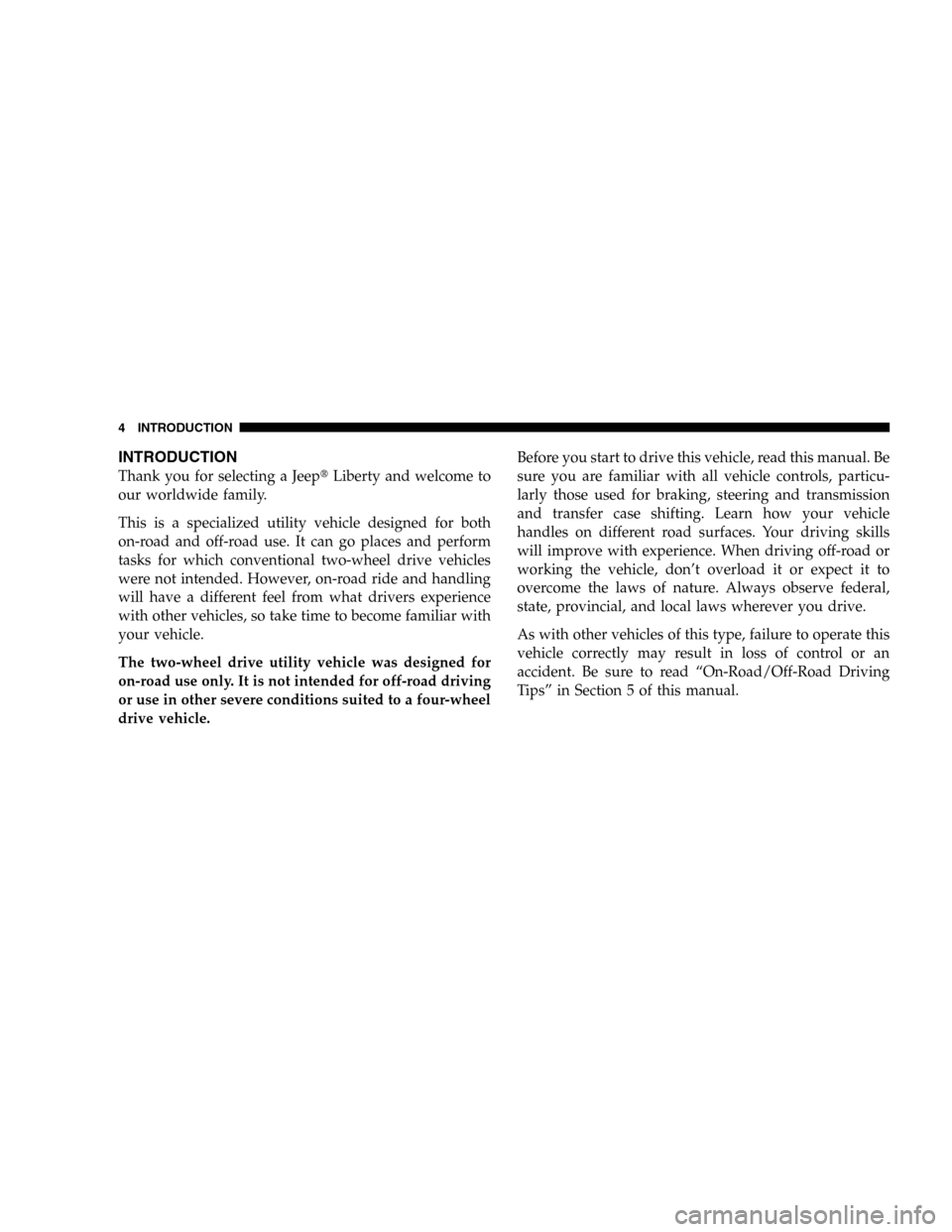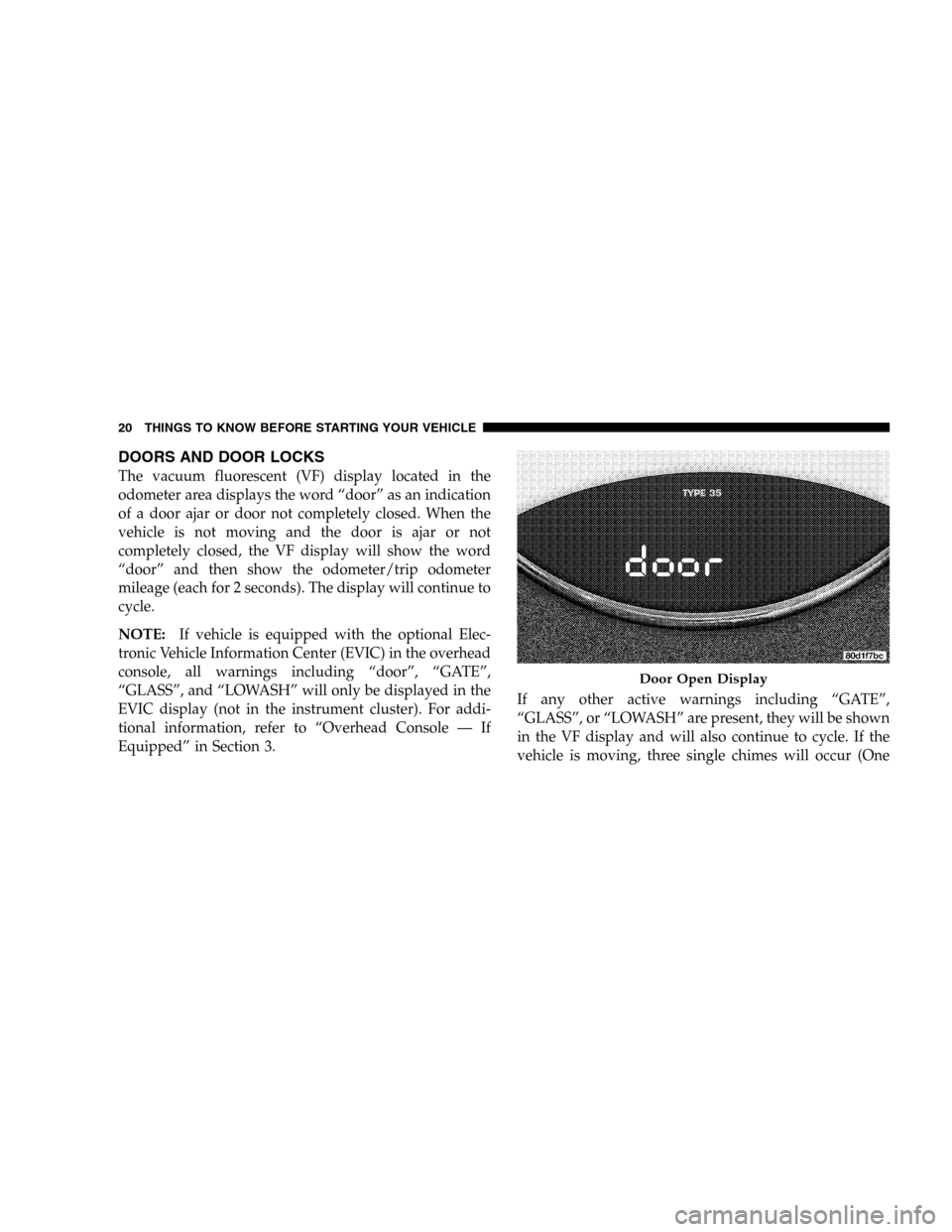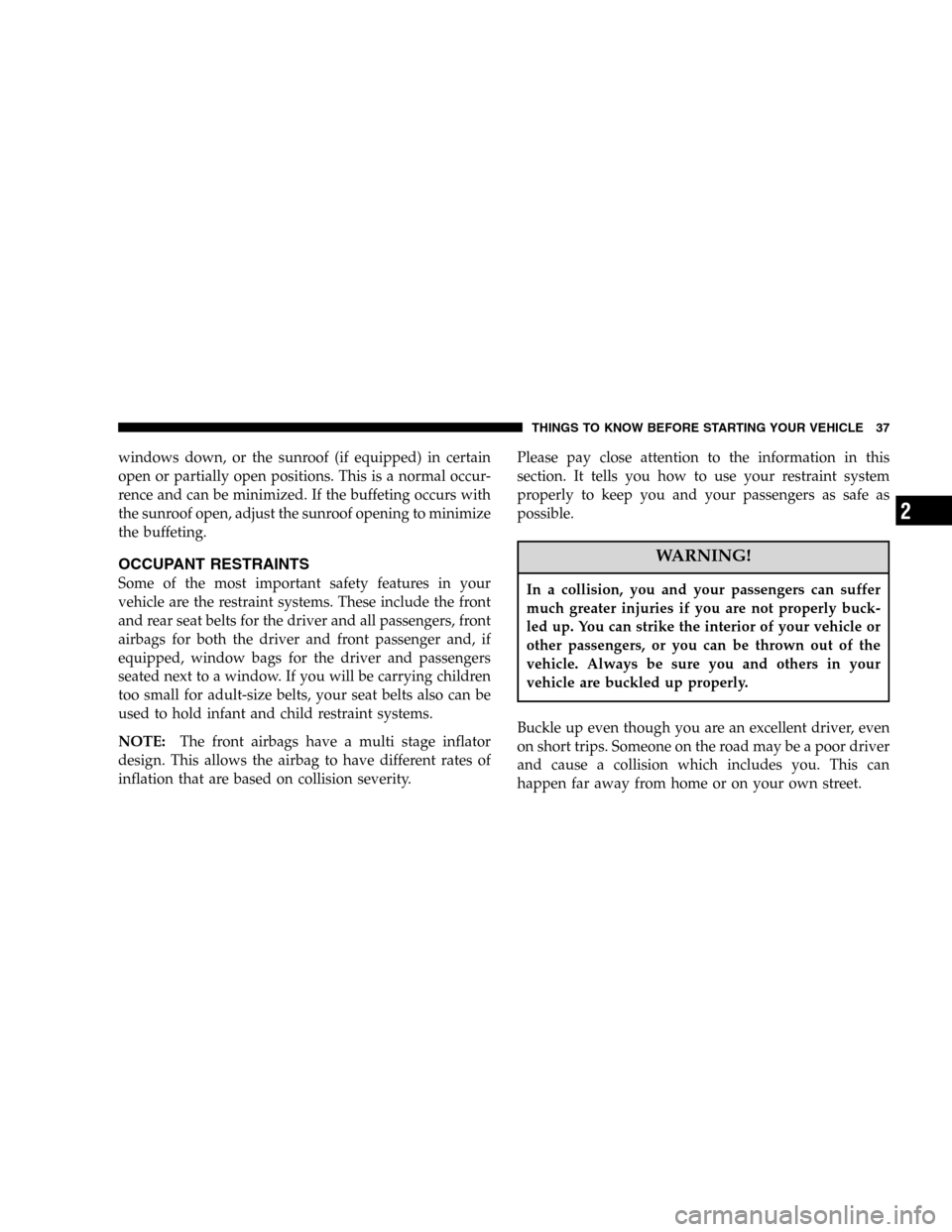Page 1 of 424
TABLE OF CONTENTSSECTIONPAGE
1INTRODUCTION.............................................................3
2THINGS TO KNOW BEFORE STARTING YOUR VEHICLE.............................11
3UNDERSTANDING THE FEATURES OF YOUR VEHICLE..............................77
4UNDERSTANDING YOUR INSTRUMENT PANEL...................................161
5STARTING AND OPERATING.................................................217
6WHAT TO DO IN EMERGENCIES..............................................291
7MAINTAINING YOUR VEHICLE...............................................303
8MAINTENANCE SCHEDULES..................................................359
9IF YOU NEED CONSUMER ASSISTANCE.........................................389
10INDEX....................................................................399
1
2
3
4
5
6
7
8
9
10
Page 4 of 424

INTRODUCTION
Thank you for selecting a Jeep�Liberty and welcome to
our worldwide family.
This is a specialized utility vehicle designed for both
on-road and off-road use. It can go places and perform
tasks for which conventional two-wheel drive vehicles
were not intended. However, on-road ride and handling
will have a different feel from what drivers experience
with other vehicles, so take time to become familiar with
your vehicle.
The two-wheel drive utility vehicle was designed for
on-road use only. It is not intended for off-road driving
or use in other severe conditions suited to a four-wheel
drive vehicle.Before you start to drive this vehicle, read this manual. Be
sure you are familiar with all vehicle controls, particu-
larly those used for braking, steering and transmission
and transfer case shifting. Learn how your vehicle
handles on different road surfaces. Your driving skills
will improve with experience. When driving off-road or
working the vehicle, don’t overload it or expect it to
overcome the laws of nature. Always observe federal,
state, provincial, and local laws wherever you drive.
As with other vehicles of this type, failure to operate this
vehicle correctly may result in loss of control or an
accident. Be sure to read “On-Road/Off-Road Driving
Tips” in Section 5 of this manual.
4 INTRODUCTION
Page 7 of 424
WARNING!
Engine exhaust, some of its constituents, and certain
vehicle components contain or emit chemicals
known to the State of California to cause cancer and
birth defects or other reproductive harm. In addition,
certain fluids contained in vehicles and certain prod-
ucts of component wear contain or emit chemicals
known to the State of California to cause cancer and
birth defects or other reproductive harm.
HOW TO USE THIS MANUAL
Consult the table of contents to determine which section
contains the information you desire.
The detailed index, at the rear of the manual, contains a
complete listing of all subjects.
WARNINGS AND CAUTIONS
This manual containsWARNINGSagainst operating
procedures which could result in an accident or bodily
injury. It also containsCAUTIONSagainst procedures
which could result in damage to your vehicle. If you do
not read this entire manual you may miss important
information. Observe all Warnings and Cautions.
INTRODUCTION 7
1
Page 19 of 424

2. This device must accept any interference that may be
received, including interference that may cause undes-
ired operation.
STEERING WHEEL LOCK — IF EQUIPPED
Your vehicle may be equipped with a passive steering
wheel lock (manual transmission only). This lock pre-
vents steering the vehicle without the ignition key. If the
steering wheel is moved a half turn in either direction
and the key is not in the ignition, the steering wheel will
lock.
To Manually Lock the Steering Wheel
With the engine running, rotate the steering wheel 1/2
revolution from straight ahead position, turn off the
engine and remove the key. Rotate the steering wheel
slightly in both directions until the lock engages.
To Release the Steering Wheel Lock
Insert the key in the ignition and turn the wheel slightly
to the right or left to disengage the lock.
NOTE:If you turned the wheel to the right to engage
the lock, you must turn the wheel slightly to the right to
disengage it. If you turned the wheel to the left to engage
the lock, turn the wheel slightly to the left to disengage it.
ILLUMINATED ENTRY
The interior lights come on when you open any door.
They will remain on for about 30 seconds after all doors
are closed then fade to off, unless, the dome inhibit
feature was selected on the multi-function control lever.
Refer to LIGHTS in Section 3 of this manual.
The lights also will fade to off if you turn on the ignition
after you close all the doors.
THINGS TO KNOW BEFORE STARTING YOUR VEHICLE 19
2
Page 20 of 424

DOORS AND DOOR LOCKS
The vacuum fluorescent (VF) display located in the
odometer area displays the word “door” as an indication
of a door ajar or door not completely closed. When the
vehicle is not moving and the door is ajar or not
completely closed, the VF display will show the word
“door” and then show the odometer/trip odometer
mileage (each for 2 seconds). The display will continue to
cycle.
NOTE:If vehicle is equipped with the optional Elec-
tronic Vehicle Information Center (EVIC) in the overhead
console, all warnings including “door”, “GATE”,
“GLASS”, and “LOWASH” will only be displayed in the
EVIC display (not in the instrument cluster). For addi-
tional information, refer to “Overhead Console — If
Equipped” in Section 3.If any other active warnings including “GATE”,
“GLASS”, or “LOWASH” are present, they will be shown
in the VF display and will also continue to cycle. If the
vehicle is moving, three single chimes will occur (One
Door Open Display
20 THINGS TO KNOW BEFORE STARTING YOUR VEHICLE
Page 28 of 424

To Program Additional Transmitters
NOTE:If vehicle is equipped with the optional Elec-
tronic Vehicle Information Center (EVIC) in the overhead
console, the transmitters may also be programmed
through the EVIC display. For additional information,
refer to “Overhead Console — If Equipped” in Section 3.
Up to 4 transmitters can be programmed to your vehicle.
To obtain additional transmitters, contact your autho-
rized dealer. To program a transmitter (within 23–50 feet
(7–15 meters) of the vehicle), perform the following
procedure:
1. Gather every transmitter that is to be used with the
vehicle including any transmitters that are currently
programmed.
2.Enter Program Mode:Turn the ignition to the ON
position, and using a currently programmed transmitter;
press and hold the�Unlock�button on the transmitter.Continue to hold the “Unlock” button, wait at least 4 but
no longer than 10 seconds, then press and hold the
PANIC button for at least 1 second. Release both buttons
simultaneously.
3.Program Each Transmitter:All transmitters to be used
with your vehicle must be programmed as follows:
Press and release the�Lock�and�Unlock�buttons simul-
taneously, followed by a press and release of ANY button
on each transmitter to be programmed. You will hear a
chime when a transmitter has been successfully pro-
grammed.
General Information
This transmitter complies with FCC rules part 15 and
with RSS-210 of Industry Canada. Operation is subject to
the following two conditions:
1. This device may not cause harmful interference.
28 THINGS TO KNOW BEFORE STARTING YOUR VEHICLE
Page 33 of 424
EVIC display (not in the instrument cluster). For addi-
tional information, refer to “Overhead Console — If
Equipped” in Section 3.
If any other active warnings including “door” or “LO-
WASH” are present, they will be shown in the VF display
and will also continue to cycle. If the vehicle is moving,
two single chimes will occur if the rear glass is open or
three single chimes will occur if the rear swing gate is
Gate Open Display
Glass Open Display
THINGS TO KNOW BEFORE STARTING YOUR VEHICLE 33
2
Page 37 of 424

windows down, or the sunroof (if equipped) in certain
open or partially open positions. This is a normal occur-
rence and can be minimized. If the buffeting occurs with
the sunroof open, adjust the sunroof opening to minimize
the buffeting.
OCCUPANT RESTRAINTS
Some of the most important safety features in your
vehicle are the restraint systems. These include the front
and rear seat belts for the driver and all passengers, front
airbags for both the driver and front passenger and, if
equipped, window bags for the driver and passengers
seated next to a window. If you will be carrying children
too small for adult-size belts, your seat belts also can be
used to hold infant and child restraint systems.
NOTE:The front airbags have a multi stage inflator
design. This allows the airbag to have different rates of
inflation that are based on collision severity.Please pay close attention to the information in this
section. It tells you how to use your restraint system
properly to keep you and your passengers as safe as
possible.
WARNING!
In a collision, you and your passengers can suffer
much greater injuries if you are not properly buck-
led up. You can strike the interior of your vehicle or
other passengers, or you can be thrown out of the
vehicle. Always be sure you and others in your
vehicle are buckled up properly.
Buckle up even though you are an excellent driver, even
on short trips. Someone on the road may be a poor driver
and cause a collision which includes you. This can
happen far away from home or on your own street.
THINGS TO KNOW BEFORE STARTING YOUR VEHICLE 37
2